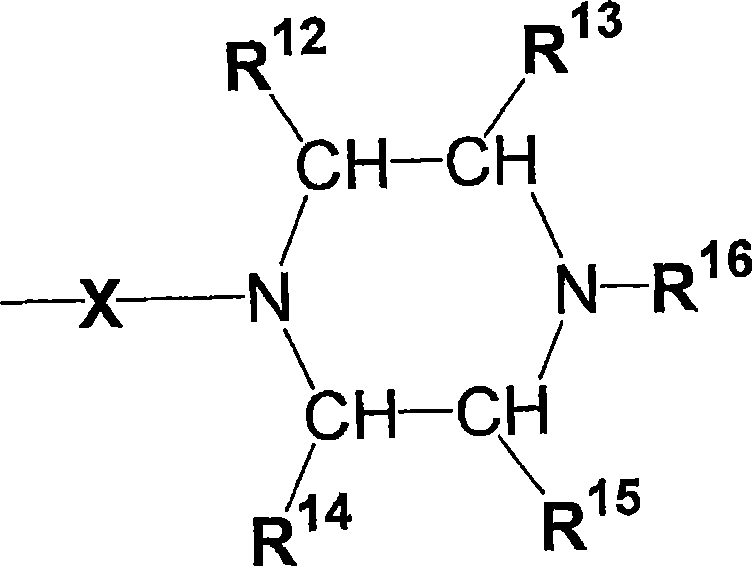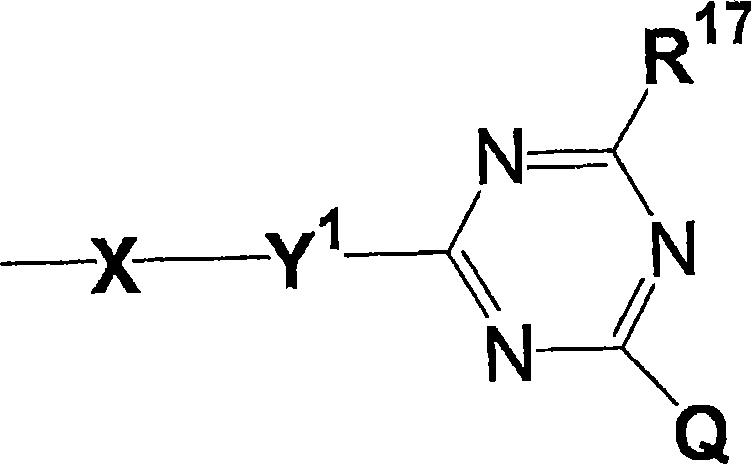Producing process for microfined organic pigment, microfined organic pigment and microfined organic pigment coloring composition
A coloring composition and organic pigment technology, applied in organic dyes, optics, instruments, etc., can solve the problems of poor viewing angle characteristics and increase, and achieve the effects of high transparency, high degree of miniaturization, and excellent viewing angle dependence
- Summary
- Abstract
- Description
- Claims
- Application Information
AI Technical Summary
Problems solved by technology
Method used
Image
Examples
Embodiment
[0207] The following examples illustrate the present invention in more detail, but the following examples are by no means limiting the scope of rights of the present invention. In addition, "part" and "%" in an Example represent "weight part" and "weight%", respectively.
[0208] (test methods)
[0209]
[0210] First, primary particles of the pigment were photographed using a transmission electron microscope (manufactured by JEOL Ltd.) to obtain an image. The projected area of each particle in the obtained image was measured using the image analysis type particle size distribution measurement software Mountech (Mantech Co., Ltd.), and the total particle projected area was divided by the number of particles to obtain the average particle diameter of the pigment particles.
[0211]
[0212] The amine value of the resin was obtained by potentiometric titration using a 0.1N hydrochloric acid aqueous solution, and then converted into the equivalent of potassium hydroxide. ...
Synthetic example 1
[0239] Into a 4-necked detachable flask equipped with a thermometer, a stirrer, a distillation tube, and a cooler, 62.4 parts of methyl ethyl ketone was added, and the temperature was raised to 75° C. under nitrogen flow. In addition, 19.5 parts of methyl methacrylate, 11.7 parts of n-butyl methacrylate, 11.7 parts of 2-ethylhexyl methacrylate, diethylene glycol monomethacrylate (manufactured by NOF) were added to the dropping funnel. , trade name: 7.8 parts of Braima (ブレンマ—) PE90), 27.3 parts of dimethylaminoethyl methacrylate, 4.7 parts of 2,2'-azobis(2,4-dimethylvaleronitrile) and methyl ethyl ketone 15.6 parts, after mixing uniformly, was installed on a 4-necked detachable flask, and dripped for 2 hours. Two hours after the completion of the dropwise addition, it was confirmed that the polymerization yield was 98% or more based on the solid matter, and the weight average molecular weight (Mw) was 7130, and it was cooled to 50°C. 22.0 parts of benzyl chloride and 22.0 part...
Synthetic example 2
[0241]Into a 4-necked detachable flask equipped with a thermometer, a stirrer, a distillation tube, and a cooler, 80 parts of methyl ethyl ketone was added, and the temperature was raised to 75° C. under nitrogen flow. In addition, add 20 parts of methyl methacrylate, 10 parts of n-butyl methacrylate, 5 parts of 2-ethylhexyl methacrylate, 16 parts of Braima PE9016 parts, Kayama— PM-21 (manufactured by Nippon Kayaku Co., Ltd.: Phosphate ester of ε-caprolactone 1mol added with 2-hydroxyethyl methacrylate) 10 parts, dimethylaminoethyl methacrylate 25 parts, 2,2'- After mixing 6 parts of nitrogen bis(2,4-dimethylvaleronitrile) and 20 parts of methyl ethyl ketone evenly, they were installed in a 4-necked detachable flask and added dropwise for 2 hours. Two hours after the completion of the dropwise addition, it was confirmed that the polymerization yield was 98% or more based on the solid content, and the weight average molecular weight (Mw) was 7320, and it was cooled to 50°C. 13...
PUM
| Property | Measurement | Unit |
|---|---|---|
| amine value | aaaaa | aaaaa |
| diameter | aaaaa | aaaaa |
| amine value | aaaaa | aaaaa |
Abstract
Description
Claims
Application Information
 Login to View More
Login to View More - R&D
- Intellectual Property
- Life Sciences
- Materials
- Tech Scout
- Unparalleled Data Quality
- Higher Quality Content
- 60% Fewer Hallucinations
Browse by: Latest US Patents, China's latest patents, Technical Efficacy Thesaurus, Application Domain, Technology Topic, Popular Technical Reports.
© 2025 PatSnap. All rights reserved.Legal|Privacy policy|Modern Slavery Act Transparency Statement|Sitemap|About US| Contact US: help@patsnap.com



